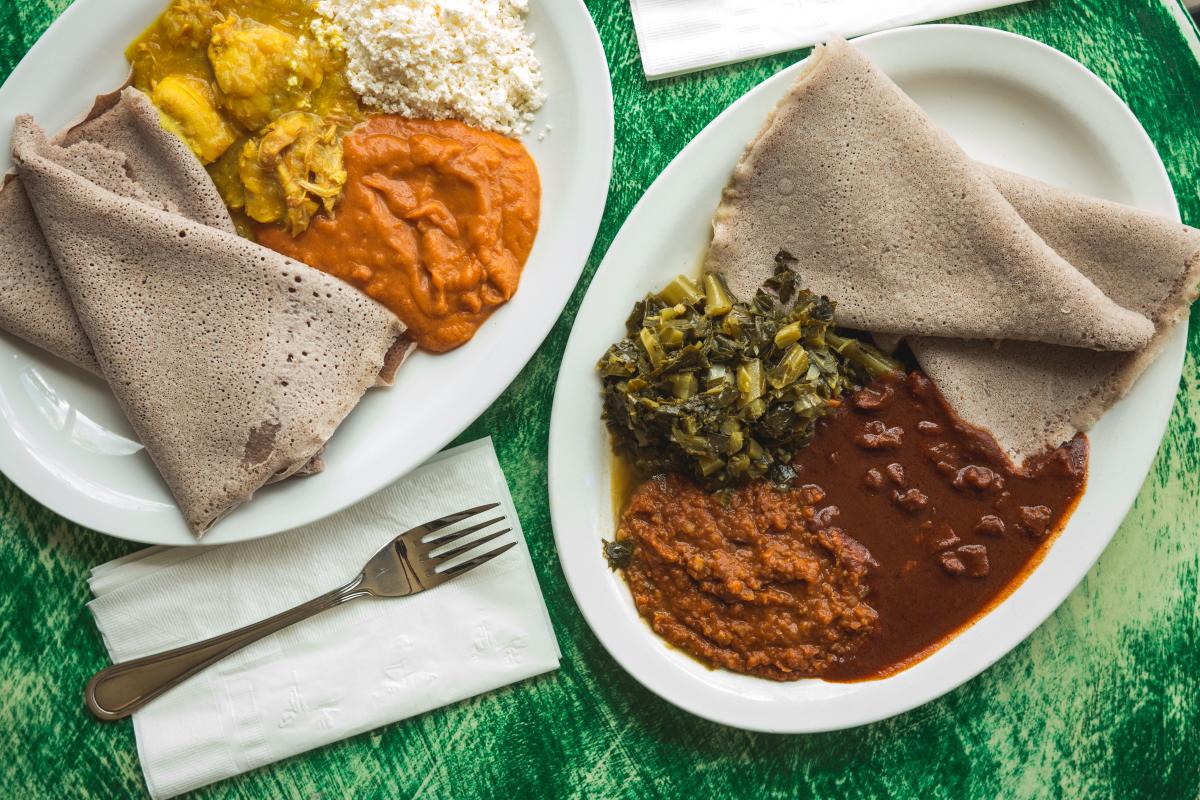By Rafaela Marcus
Unearth the UNESCO City of Gastronomy’s Roots at Mission Garden
On the 19th season of Top Chef, the penultimate episode serves up serious drama, even by reality TV standards. The final four contestants—who’ve just been whisked off to the Sonoran Desert—come upon “our friend Jesús…the guru” in a walled garden, where he tells them they’re standing on ancient agricultural ground, and their fate now rests on the prickliest of crops.
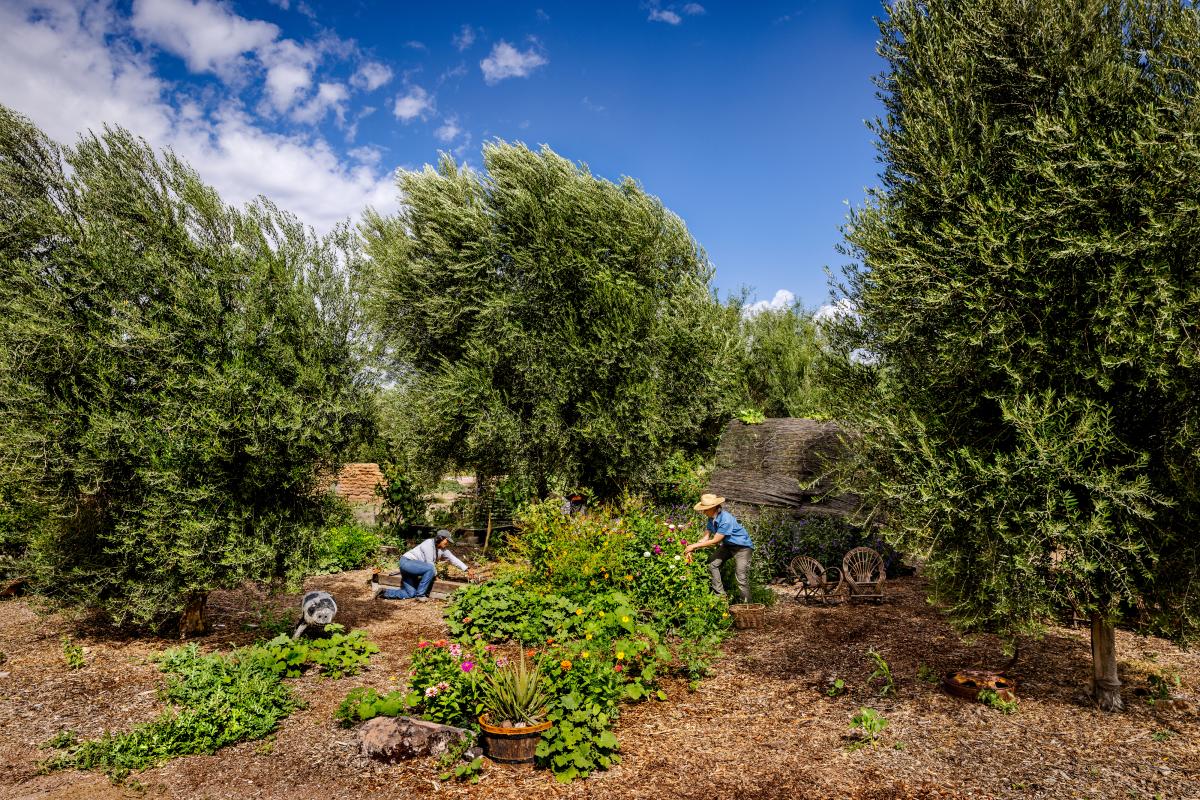 Above: Seasonal crops are harvested year-round by the team at Mission Garden.
Above: Seasonal crops are harvested year-round by the team at Mission Garden.
Yes, each chef must craft a masterpiece from cactus—plus the blazing local micro-chiles and whatever else looks ripe for the picking. To everyone’s relief, that includes figs, quince, grapes, citrus, and the so-called three sisters: corn, beans, and squash. The grounds prove so abundant and unusual, in fact, that they take on their own kind of star power—no small feat on a show hosted by Padma Lakshmi.
The resulting meal boasts everything from nopales rellenos to tom yum. And while the audience may not be able to experience these exact dishes, the place that gave rise to them is a different story. Tucson’s Mission Garden—a living agricultural museum of heritage fruit trees, heirloom crops, and edible native plants—offers an impressive array of tastings, tours, workshops, and celebrations (see Events & Classes at missiongarden.org).
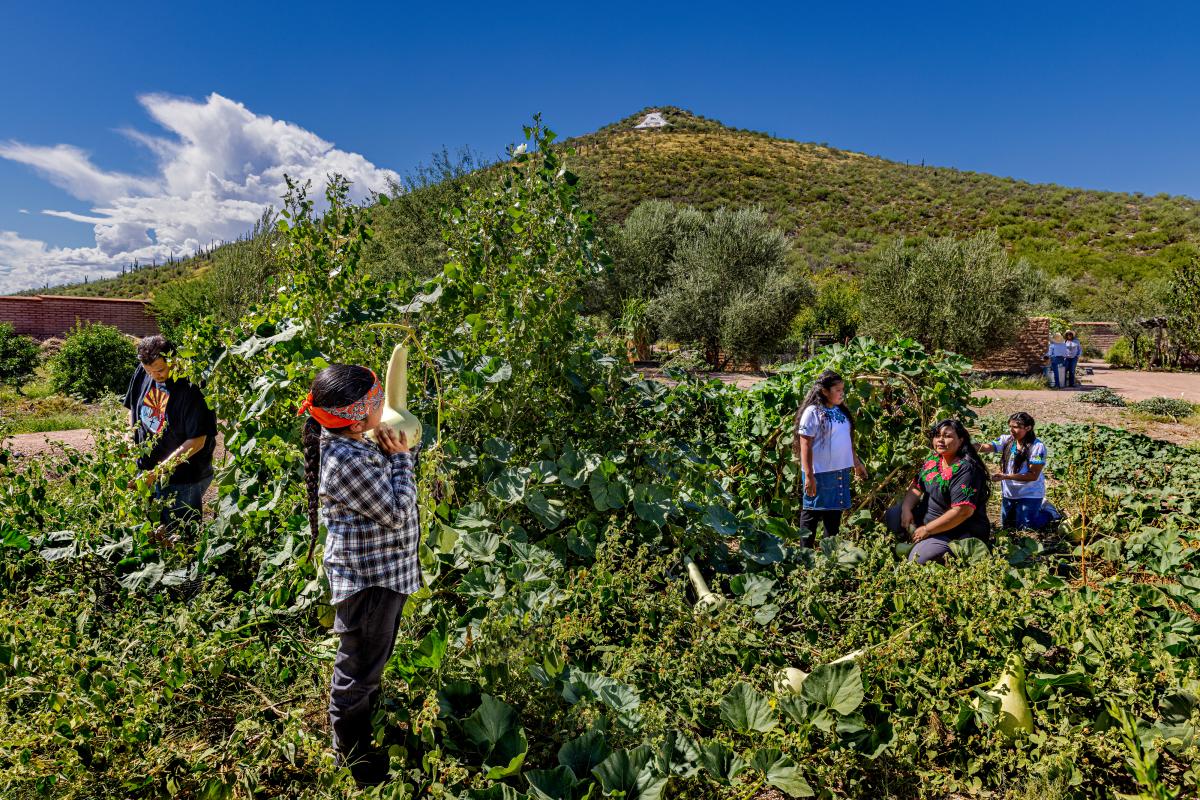 Above: Mission Garden sits below Tucson's iconic Sentinel Peak. Volunteers tend to the indigenous Yoeme Garden.
Above: Mission Garden sits below Tucson's iconic Sentinel Peak. Volunteers tend to the indigenous Yoeme Garden.
Indeed, there’s no better window onto the famed local food scene, given the site’s millennia-old roots, globe-spanning gardens, and envy-inducing talent. Beyond the aforementioned guru—ethnobotanist Jesús Garcia, whose heritage fruit tree research helped Tucson become the nation’s first UNESCO-designated City of Gastronomy—the Mission Garden crew includes oral historians, herbalists, and all manner of conservationists.
But before you go, read on for a rundown of the gardens within the garden; the restaurants, bars, and bakeries with ties to each; and the dedicated souls who help bring everything to life.
The Mexican Gardens
In a city where some 40% of the population claims Mexican heritage, and "America's Best Mexican Food" is a point of local pride, the Mission Garden’s Mexican section is a good place to start. You’ll find two gardens here: the sprawling historic Mexican Garden and the Barrio Garden—an intimate space with potted plants, a shrine, and seating, “more like a kitchen garden” that you’d find in traditionally Mexican neighborhoods, explains volunteer Elena Martin.
The short list of what’s growing here includes calabacita (squash), jamaica (hibiscus), and what Martin describes as something of “a salsa garden”—tomatoes, onions, and chiles. There’s also corn, which is so significant that it now has its own regional festival: Pueblos del Maíz, celebrated in Tucson, San Antonio, Mérida, and Puebla. During the inaugural festival last May, a beloved Tucson institution—La Estrella Bakery—made celebratory pastries from Mission Garden ingredients. In fact, the bakery is a longtime supporter of Mission Garden, says Emily Rockey, who oversees the garden’s produce sales to local businesses as well as donations to the likes of Iskashitaa, which aims to integrate refugees into the community while reducing food waste.
Another beloved local bakery, Barrio Bread—whose owner, Don Guerra, won the 2022 James Beard award for Outstanding Baker—has been a good partner, too, says Rockey. One of the best ways to taste that association for yourself? The bread offered up during the garden’s summer Garlic Festival.
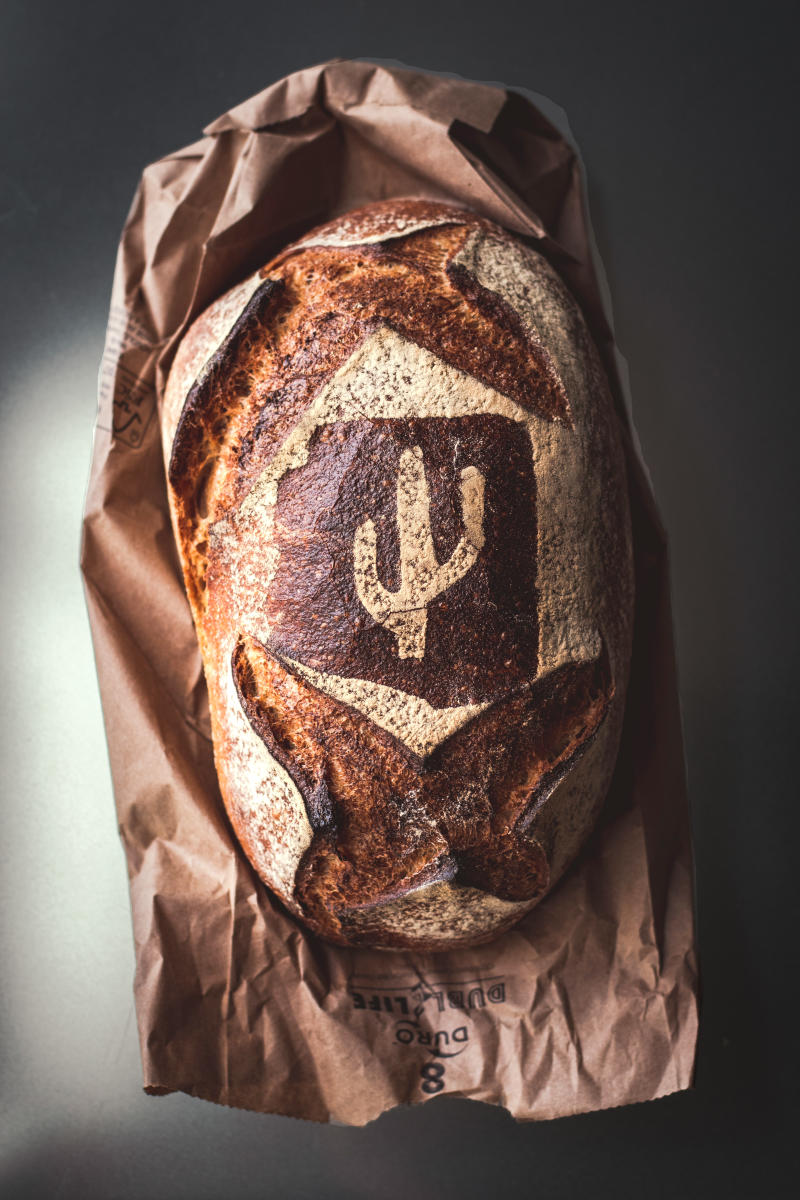
Of course, as a museum, the garden isn’t set up for large-scale production. So Tucson’s most iconic Mexican purveyors aren’t sourcing here on a regular basis. That said, the same staples harvested on a small scale at Mission Garden are reflected on menus across town, from the exquisitely spiced nopales at El Taco Rustico to the tomatoes, onions and chiles in the sublime caldo de queso at El Charro Café. For the fullest expression of chile’s potential, head to Boca by Chef Maria Mazon—a Top Chef alum with a famously expansive repertoire of salsas. And as for those calabacitas and jamaica, you’ll find both put to excellent use at Seis Kitchen—the former in garlicky tacos, the latter in refreshing aguas frescas.
The Indigenous Gardens
“From the sweat of our brow to the mud under our nails, everything we do is rooted in the acknowledgment that we are on the ancestral lands of the Tohono O’odham Nation,” states the Mission Garden on occupying S-cuk Ṣon, the name and place from which Tucson arose. Underscoring that acknowledgment are the O’odham Garden Before European Contact, where the crops date to 1450 and include the iconic huñ (60-day corn), and the O’odham Garden After European Contact, where you’ll find 17th-century introductions, such as winter wheat.
While winter wheat makes for admittedly delicious baked goods, “summer is so important to us,” says Maegan Lopez, who grew up on the Tohono O’odham Nation and now serves as assistant gardener at Mission Garden. “Throughout O’odham history, we’ve relied on the summer monsoon season, which marks our new year—and the harvest of our most culturally important crops,” from 60-day corn to devil’s claw.
 Above: Devil's Claw shown in both fresh and dried forms.
Above: Devil's Claw shown in both fresh and dried forms.
Though devil’s claw is best known in a weaving context, “the seeds are actually very nutritious and can be used like sunflower seeds,” notes Lopez. She’s used other indigenous crops like the garden’s ruby-topped amaranth to make falafel, though it isn’t the most traditional use of the O’odham staple. If you’re looking for something that is, remember “‘traditional’ is a subjective term,” says Lopez. To preserve their own O’odham heritage, for example, the owners of Cafe Santa Rosa, have opted for a balance between Indigenous and Mexican influences in the menu’s iconic red chile popovers and Indian tacos. (Note that the Indian tacos at La Indita are another local favorite, so be thorough and try both.)
You can also find popovers at Mission Garden during the Native American Arts Festival, when an O’odham fry-bread wizard named Adelia incorporates the garden’s own squash and beans into her menu. Indeed, squash and beans—plus the third “sister,” corn—populate the garden’s Indigenous plots, from the ancient Hohokam (the ancestors of the O’odham) Garden to the in-progress Yoeme Garden (the Yoeme also call Tucson home). Look for odes to the three sisters on menus across town, one favorite being the 3 Sisters Soup & Salad at Charro Vida.
Tucson’s brewers have been known to incorporate Indigenous ingredients, too, and some source directly from the garden. Exo Roast Co., for one, has offered everything from a chiltepin cold brew to an O’odham yellow watermelon cocktail. For its part, Borderlands Brewing Co. makes Viejo Pueblo Blonde Ale with O’odham 60-day corn.
Spanish Colonial Orchard & Vegetable Garden
Dating to the 17th-century arrival of the Spaniards, this section is the brainchild of “our friend Jesús” of Top Chef fame. That profusion of fruit the contestants found onsite results from endless digging on Garcia’s part—sometimes through dirt, but just as often through old Jesuit journals, mining town chronicles and oral histories created by Patricia Preziado Martin, mother of the aforementioned Elena Martin.
When you visit Tucson’s oldest neighborhoods, “or anyplace in the region where Mexicans have lived for a long, long time, you can still find citrus, fig, pomegranate and in some cases, quince trees,” says Garcia. “There’s direct evidence that these varieties have been part of life here for centuries, and the Spanish Garden at Mission Garden has become the exhibit where we can care for such trees, get cuttings and reproduce them for education.”
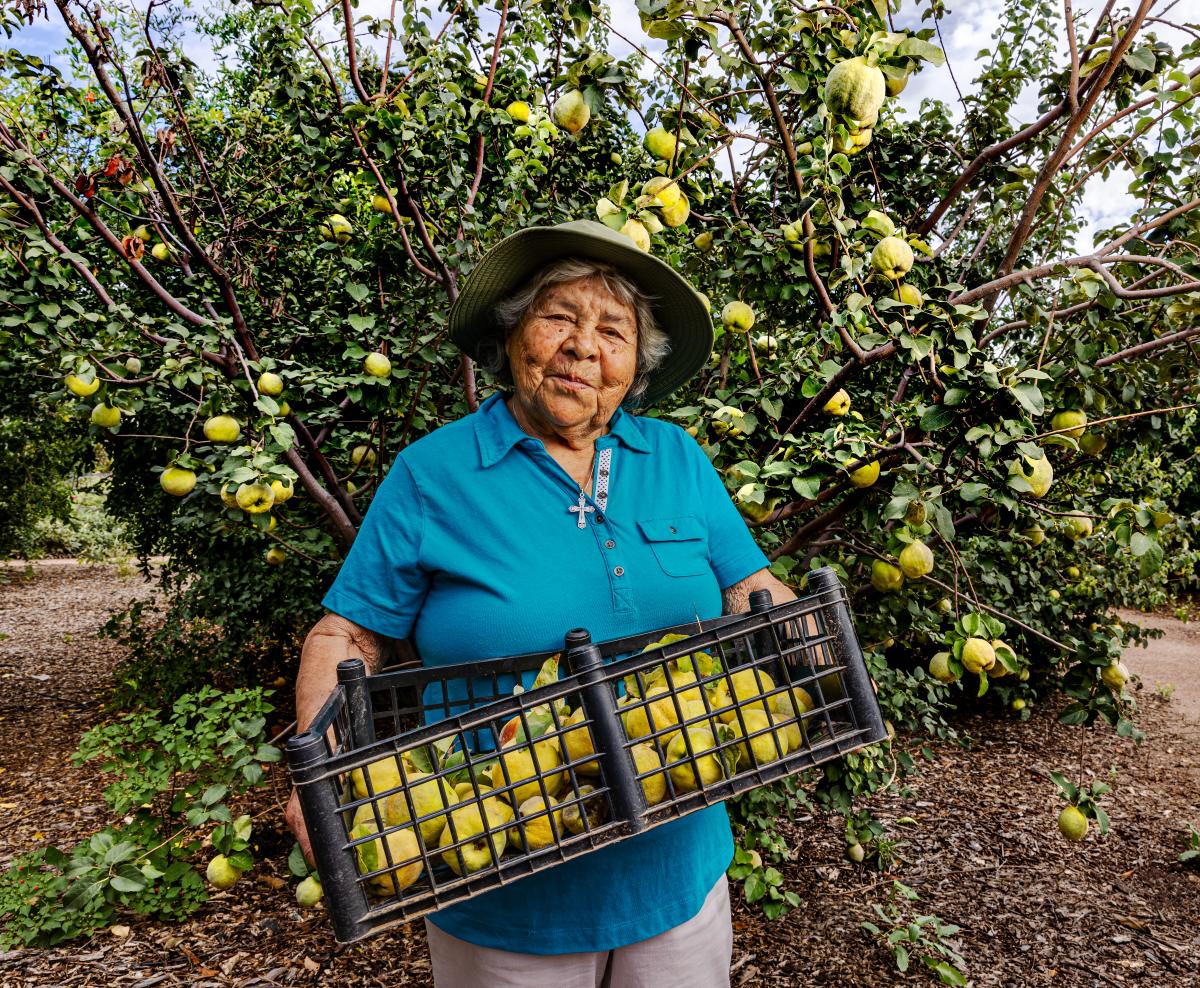 Above: Referred to as 'La Madrina del Jardin', or the 'Godmother of the Garden', Josefina Lizárraga's long-helf knowledge of the local fruit and its many uses is an indispensible asset to the garden's patrons.
Below: Lizárraga harvesting quince, the namesake fruit of the garden's annual Membrillo Fest in October.
Above: Referred to as 'La Madrina del Jardin', or the 'Godmother of the Garden', Josefina Lizárraga's long-helf knowledge of the local fruit and its many uses is an indispensible asset to the garden's patrons.
Below: Lizárraga harvesting quince, the namesake fruit of the garden's annual Membrillo Fest in October.

The fruit grown at the garden—though not abundant enough for widescale use—readily supplies its own festivals (such as October’s Membrillo Fest), plus the handful of restaurants and bars that circumstantially source here. That list changes seasonally, but a recent sampling includes Time Market (a restaurant, shop and bakery that tends to work with whatever’s fresh from the garden); 5 Points Market ( whose pastries often incorporate the figs and quince); and Tito & Pep (where quince is key to the signature pork dish). If you like your colonial-era fruit in liquid form, stop by the Bawker Bawker Cider House for Mission Garden Fig or Peach Cider on tap.
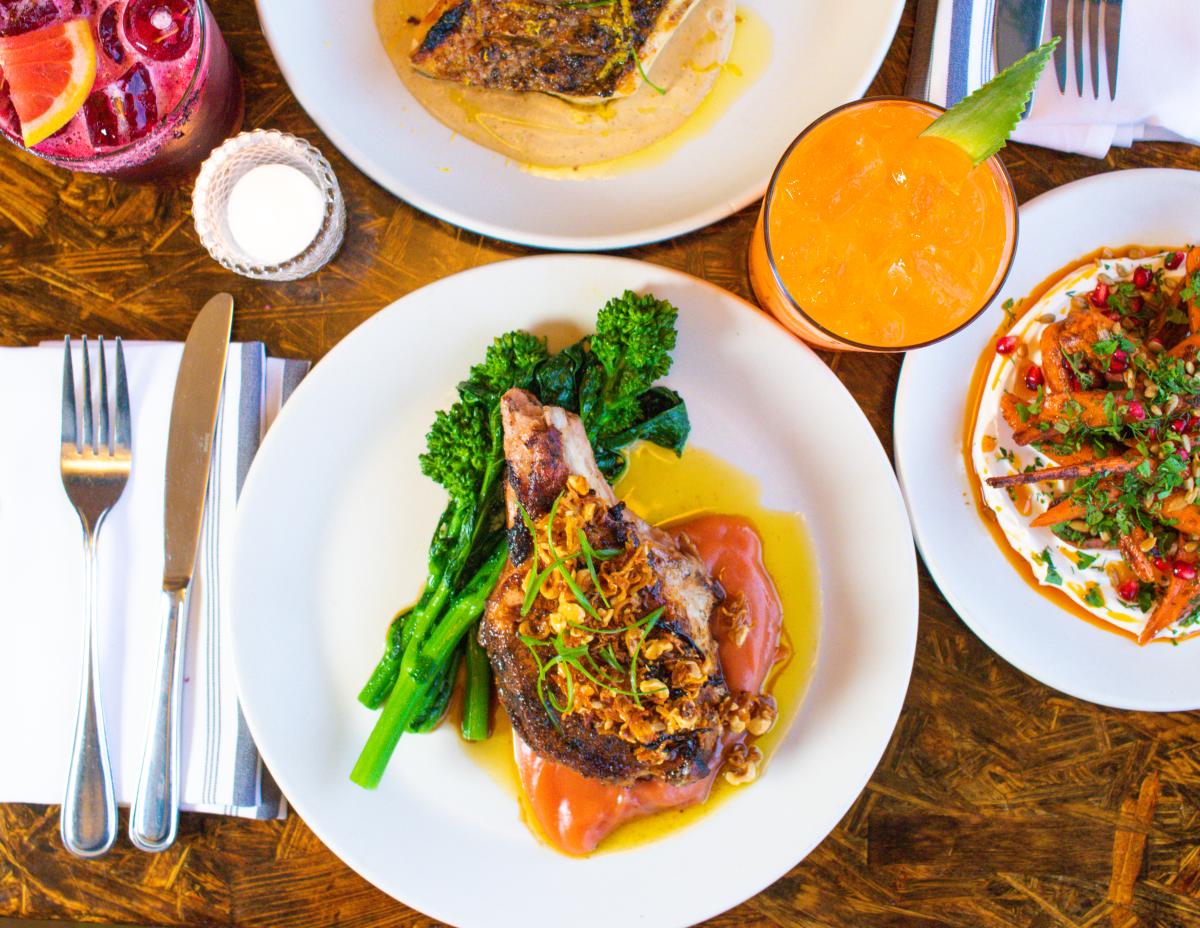 Above: The signature pork dish at Tito & Pep.
Above: The signature pork dish at Tito & Pep.
The Chinese Garden
A tribute to the rich history of Chinese farmers who’ve put down local roots, this garden aims to replicate what the first Chinese growers harvested along the Santa Cruz River in the 19th century and later generations raised in backyard gardens. The resulting harvest, born of “heritage seeds that came from early Chinese families in the Tucson area,” according to volunteer Nancy Tom, ranges from jujubes to bitter melon—both increasingly recognized for their health benefits, she adds.
Below: Richard Fe Tom and Nancy Tom tell the story of how Chinese farmers played an integral role in Tucson's culinary heritage.

While no Chinese restaurants source directly from Mission Garden (to date), the Tucson Chinese Cultural Center is a close partner. You can taste the results of that alliance at celebrations like the Autumn Moon Festival and Lunar New Year at the garden, where you’ll find everything from daikon radish turnip cakes with Chinese garlic chives to giant pomelos.
For similar flavors to those on offer at the garden, head to Potwhale for the veggie-forward hotpots—or dip a bit deeper into the Tucson melting pot with the jalapeño-spiked dishes at China Pasta House, such as the jalapeño fried bean curd rice.
 Above: Find heritage ingredients like those grown at Mission Garden at Potwhale.
Above: Find heritage ingredients like those grown at Mission Garden at Potwhale.
Africa in the Americas
One of the most recently inaugurated gardens offers an eye-opening counternarrative to the commonly held belief that 17th-century Jamestown saw the arrival of the first people of African descent in what is now the U.S. According to volunteer and historian Michael Engs, whose wife Sidney and sister-in-law Stephanie have been instrumental to the creation of Africa in the Americas, “the first Black person came to New Spain [what is now Arizona] in 1539, and that began a series of journeys of African-based people to the region.” Why is this history so unknown? Largely because you need to piece it together from the most fleeting of references, says Engs. “You could read an entire book on the Spanish conquest, and you may get two sentences that mention people of African descent.”
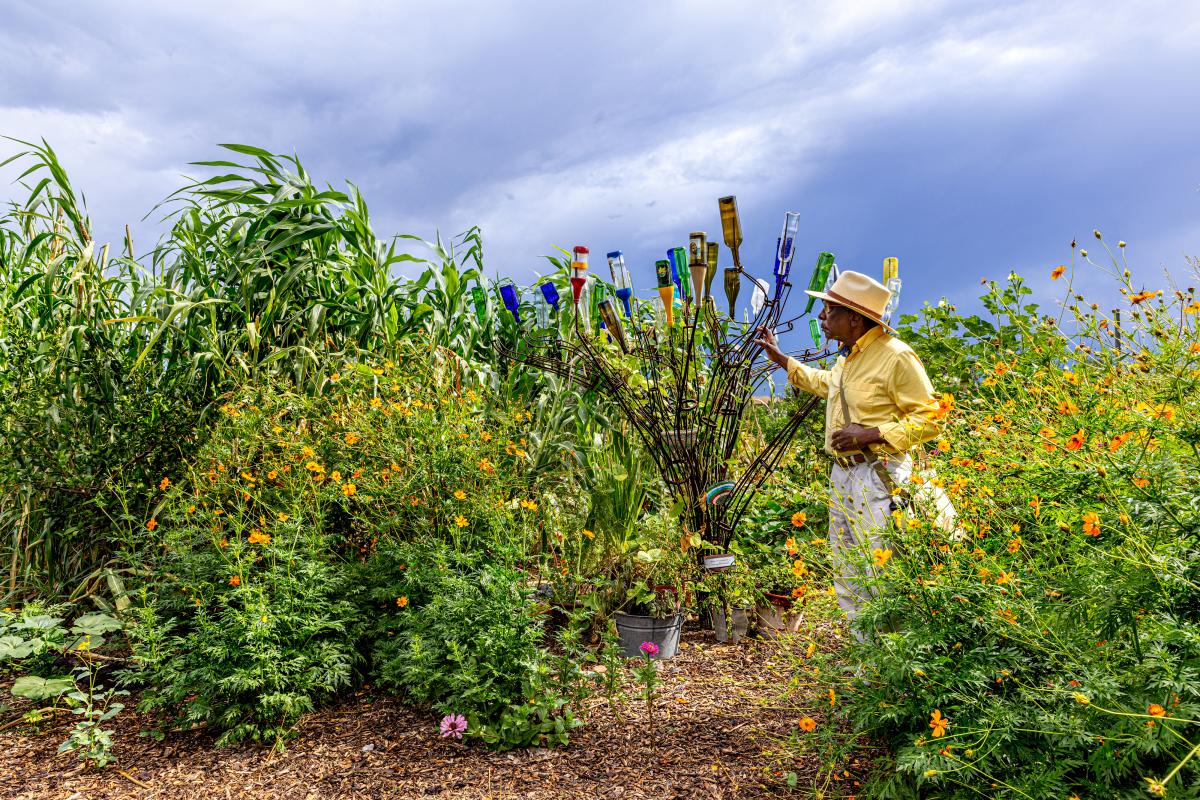
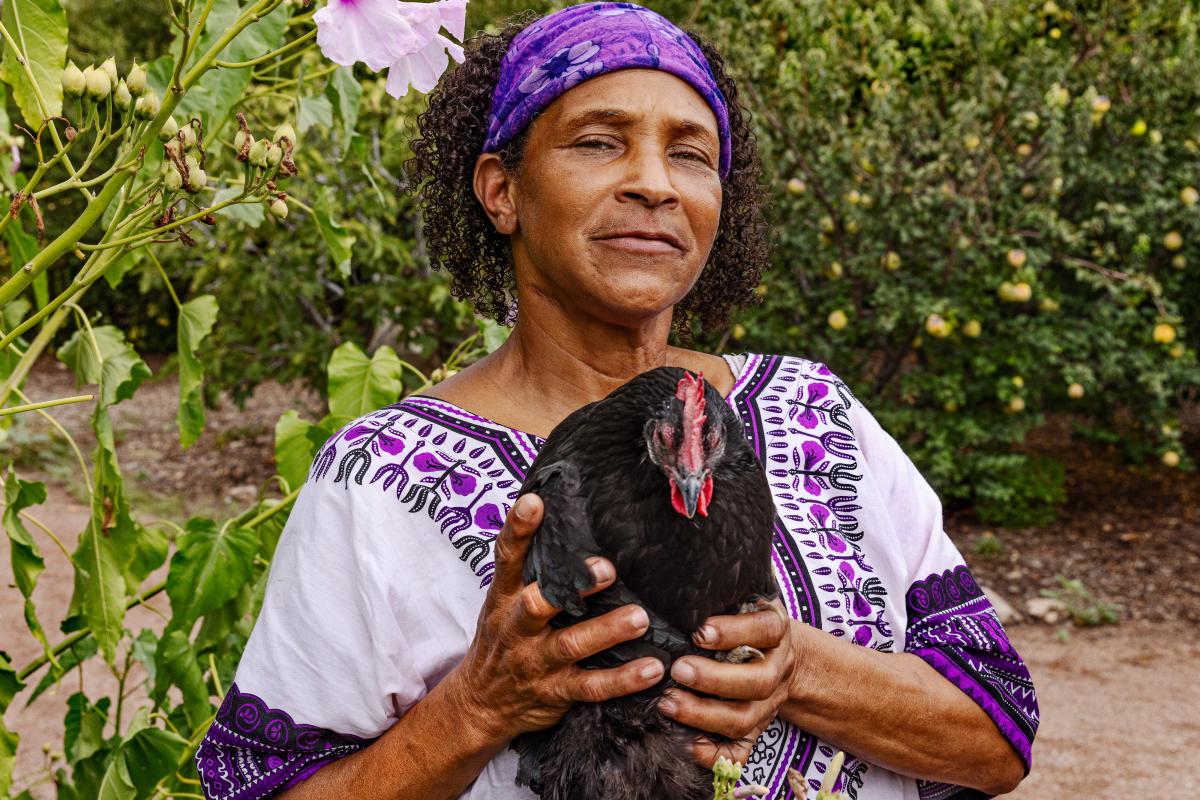
Parallel research into their diet—and that of subsequent Tucsonans of African descent—has led to the garden’s crops: sorghum, millet, onions, collard greens, and okra, for starters. But elements that nourish the soul feel equally important here, as you’ll find everywhere from the tribute to Natalie Bazile (the literary force behind Hulu’s Queen Sugar) to the evocative bottle tree sculpture.
Because this part of the garden is so new, direct restaurant partnerships have yet to be established, but many of the same crops make appearances on menus—from the okra sauce at Alafia West African Cuisine to the collard greens-based gomen at the Ethiopian Café Desta.
Below: Taste the distinct flavors brought from Africa to Tucson at restaurants like Cafe Desta.
